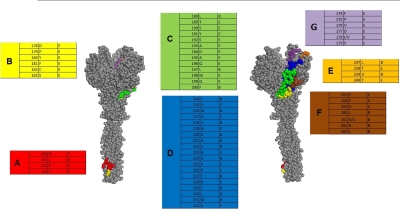Identification and genetic correlation of avian reoviruses to the currently used vaccines in Egypt
Authors: Marwa Safwat, Amany Adel, Mohamed Rady, Mohamed H. Hamoud and Walid H. Kilany
Ger. J. Vet. Res
2024.
vol. 4, Iss. 1
pp:1-8
Doi: https://doi.org/10.51585/gjvr.2024.1.0068

Abstract:
A variety of illnesses, including arthritis, tenosynovitis, stunted growth, and malabsorption syndrome, are caused by Avian Reoviruses (ARVs), which have become more prevalent in Egypt during recent years and resulted in significant economic losses. This study investigated 27 suspected samples collected from 14 broiler breeders and 13 broilers suffering from immunosuppression, decreased body weight, and diarrhea. Fourteen samples tested positive based on RT-PCR, and the virus could be isolated from ten samples in Specific Pathogen Free (SPF) embryonated chicken eggs. Ten isolates were subjected to molecular and genetic analysis of the S1 gene (sigma C) and S2 gene (sigma A). The amino acid identity of the S1 gene revealed that these viruses are closely related to the viruses that were identified in Israel during 2020 (91.8%-97.2% identity) and belonged to the genetic cluster 5 (genotype 5), which also includes some viruses that are circulating in the United States and Canada. They also showed weak similarity (48.9%-50.2%) with the available vaccine strains in the Egyptian field that belong to cluster 1, genotype 1. The S2 gene showed amino acid homology of 91.7%-98.2% with the current vaccine used in Egypt. However, the Egy-Reo-7-2021 virus had the lowest similarity (84.2%-87.6%) to the available vaccine. It is hypothesized that the difference between field and vaccine strains may have contributed to the failure of current vaccinations to produce protective immunity against current ARV strains circulated in Egypt, which made the disease a problem to the poultry industry. Developing homologous vaccines and evaluating their potency and efficacy are required in Egypt.
Keywords:
Avian reovirus, Genetic characterization, Surveillance, Sigma A, Sigma C
Statistics:
Article Views: 2071
PDF Download: 89